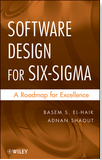

Robust Design
At Six Sigma Professionals we practice traditional optimization methods but our preferred strategy for optimization is the Robust Design approach. This methodology is easily taught to engineers and is the most effective strategy in dealing with sources of variation which are difficult or impossible to control. Sources of variation such as customer usage conditions, usage environment, and the effects of deterioration over time are the types of noise that we need robustness against.
The Dynamic Formulation; y = f(M, Xi, N)
The Dynamic form of this method is characterized by recognizing that all systems are developed to transform an input (Intent) into useful output (Result). The robust optimization approach optimizes this input-output relationship such that this relationship is proportional (stable) across the user defined range of interest. Most all systems can be formulated as dynamic systems. In fact, there are advantages to defining this useful range (Signal Factor M) so that it represents future or anticipated needs of the system. In this way we develop a technology that is robust to different product applications. This approach is referred to as robust technology development.
This same approach is used for complex systems where there are many sub-functions, and the task of the engineer is to ensure that there is robustness at system interfaces. A system that is optimized for dynamic robustness is easily adjustable to meet changing sensitivity needs.
Robustness Big Ideas...
- System characterization (the P-Diagram)
- Optimize function to reduce failure
- The Signal-to-Noise ratio
- The definition of NOISE and it's application in optimization
- The robust design experiment and 2-step optimization
- Prediction and confirmation
Customized training schedules can be developed on a case by case basis with clients. Here are some options:
- Introduction to Robust Design
- Introduction To Computer-Aided Robust Design (CARD)
- Design For Six Sigma (DFSS) with Robust Design
- Robust Parameter Design - Static Formulation
- Robust Parameter Design - Dynamic Formulation
- Tolerance Design
- Parameter/Tolerance Design Workshops
To know more, contact us @: info@sixsigmapi.com or (734) 765-5229.













